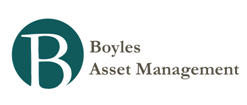Federal Reserve Policy Failures Are Mounting - By Lacy Hunt
Found via Zero Hedge.
The Fed's capabilities to engineer changes in economic growth and inflation are asymmetric. It has been historically documented that central bank tools are well suited to fight excess demand and rampant inflation; the Fed showed great resolve in containing the fast price increases in the aftermath of World Wars I and II and the Korean War. In the late 1970s and early 1980s, rampant inflation was again brought under control by a determined and persistent Federal Reserve.
However, when an economy is excessively over-indebted and disinflationary factors force central banks to cut overnight interest rates to as close to zero as possible, central bank policy is powerless to further move inflation or growth metrics. The periods between 1927 and 1939 in the U.S. (and elsewhere), and from 1989 to the present in Japan, are clear examples of the impotence of central bank policy actions during periods of over-indebtedness.
- The Daily Princetonian Speaks To Paul Volcker
Link to interview: Q&A: Former Federal Reserve chairman Paul Volcker '49 DP: Pretty recently, some economists have suggested that the central bankers took [the threat of] inflation too seriously. PV: I’ll give you a simple answer. The responsibility...
- The Absolute Return Letter - July 2013: Much Ado About Nothing
The growing presence of political incompetence is beginning to annoy the world’s central bankers. The Bank for International Settlements (the central bank of central banks) has sharpened its knives, but BIS cannot have it both ways. Simultaneous de-leveraging...
- Which Way For Bonds? Mapping A Path Forward - By Bill Gross
Q: Can you explain what is happening in markets now? Gross: In 1980, the Federal Reserve, led by Paul Volcker, tightened the quantitative noose to tame double-digit inflation, fueling an unprecedented tailwind for bond prices. Thirty years later...
- Hussman Funds Semi-annual Report
The U.S. economy appears suspended at the boundary between tepid growth and recession, requiring a trillion-dollar federal deficit and unprecedented monetary easing simply to maintain that position. The Federal Reserve continues a well-known and fully-announced...
- The Absolute Return Letter - November 2010: Four Rather Sick Patients
For a world which continues to be on life support – in the form of unsustainably large fiscal stimulus and near zero interest rates – policy makers are fast running out of options. One of the options left is quantitative easing and rumours are rife...

